174. A vast amount of
information is stored in the human genome,
in its DNA helix where the loss of a 'byte'
in one of its double strands quickly will be repaired from
the other - which supports the first strand
in the same way as the first strand will
keep the second strand intact and repair its
faults. Likewise will a pair of intertwined
strings be stronger than a single sequence
of fiber.
... Sa.: fau,
to tie together, to fasten by tying, the
tree (Hibiscus tiliaceus)
whose bast is used for cord, the kava
strainer made therefrom, strings in various
uses; fafau, to
lash on, to fasten with sennit;
faufau, to
fasten on, to tie together. To.:
fau, to fasten
up the hair, the name of the hibiscus, the
kava strainer made therefrom;
faufau, to fasten the
outriggers of small canoes;
hau, to fasten to;
fehauaki, to
tie. Fu.: fau,
the hibiscus, the kava strainer;
faù,
fafaù,
faùfaù, to
attach, to tie. Niuē: fau,
fafau, to make
by tying. Fotuna:
no-fausia, to tie, to fasten.
Ta.: fau, the
hibiscus; fafau,
to tie together. Pau.: fau,
the hibiscus. Nuguria: hau,
id. Ma.: hau,
to bind, to fasten together;
whau, a shrub;
whauwhau, to tie. Ha.:
hau, name of a
tree with a practicable bark. Mq.:
hau, the
hibiscus. Mgv.: hau,
id.; hahau, to
join or tie with cords. Nukuoro:
hau, the
hibiscus, a garland. Mg.:
au, the hibiscus. Vi.:
vau, the
hibiscus; vautha,
to bind together. Churchill 2.

The sequence of names and images for the
fixed stars (and later also for the
asterisms and the constellations) which one
after another rose at the horizon in the
east could have
been 'intertwined' with features in sequence
down on earth by using 'number bytes' measured out from the right ascension
positions, creating a 'double helix' so to
say which all
astronomers could use. And this idea could
have been the origin of writing.
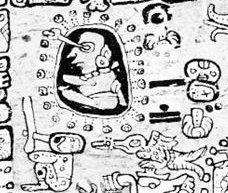
... HILI, v.
Haw., to braid, plait, twist, turn over,
spin; wili, id.; wili, s. a
ribbon a roll; wili-wili, to stir
round, to mix; another dialectical variation
is hilo, to twist, turn, spin. Sam.,
fili, to plait, as sinnet; filo, to
mix, s. twine, thread; vili, a
gimlet a whirlpool. Marqu., fau-fii,
twist, braid. N. Zeal., wiri, id.
Rarot., iro, id. Tah., firi,
id.; hiro, id. Fiji., siri,
askew, not nicely in a row, wrong, in error.
Tagal and Bisays, hilig, a woof.
Greek, είλω,
to roll up, to press together, pass to and
fro, to wind, turn round;
έλισσω, turn round or about,
roll, whirl; έλιξ,
adj., twisted,
curled; s.
anything of a spiral shape, twist, curl,
coil; ίλλω, to
roll, of the eyes, to squint, look askance;
ίλλος,
squinting; ίλλας,
a rope, band; ίλιγξ,
a whirlpool. Sanskr., vel,
vehl, to shake,
tremble; vellita,
crooked; anu-vellita,
a bandage. To this Sanskrit
vel Benfey refers the Greek
είλω, the Latin
volvo, and the
Gothic walojan.
Liddell and Scott also incline to connect
είλω and
volvo with the
same root. To me it would seem as if the
Sanskrit vrij,
whose 'original signification', Benfey says,
is 'to bend', and the Sanskrit
vrit, whose
'original signification', Benfey says, is
'to turn', were nearer akin to the primary
form from which the Greek
είλω,
ίλλω, and
the Polynesian hili,
wiri,
descend: that primary form being
vri, now
lost to the Sanskrit, with a primary sense
of to bend, twist, turn over, braid, and of
which vel,
vell,
or vehl,
is possibly another secondary and attenuated
form. With such a Sanskrit vŗi.
surviving in vŗij
and vŗit,
the derivation of the Latin filum,
thread, as twisted, spun; of the Latin
varus,
bent asunder, parting from each other,
varix,
crookedness; of the Saxon wile,
deceit; of the Swedish willa,
confusion, error, wilse,
astray, becomes easy and intelligible.
(Fornander)
|
 |
|
viri |
... Hiro. To spin,
to twist. P Mgv.: hiro, iro,
to make a cord or line in the native
manner by twisting on the thigh. Mq.:
fió, hió, to spin, to twist,
to twine. Ta.: hiro, to twist.
This differs essentially from the
in-and-out movement involved in hiri
2, for here the movement is that of
rolling on the axis of length, the
result is that of spinning. Starting
with the coir fiber, the first operation
is to roll (hiro) by the palm of
the hand upon the thigh, which lies
coveniently exposed in the crosslegged
sedentary posture, two or three threads
into a cord; next to plait (hiri)
three or other odd number of such cords
into sennit. Hirohiro, to mix, to
blend, to dissolve, to infuse, to
inject, to season, to streak with
several colors; hirohiro ei paatai,
to salt. Hirohiroa, to mingle;
hirohiroa ei vai, diluted with
water. Churchill.
... Hiri 2. To make a
bag; taura hiri, to make a cord;
rauoho hiri, plaited hair; hirihiri,
frizzed; rauoho hirihiri, lock of
hair. P Mgv.: hiri, to weave, to
plait; akahiri, to make a mat. Mq.:
hii, large plait of coconut fiber.
Ta.: firi, to plait, to braid. When
we interpret in the sense of local
conditions Père Roussel's definition 'to
make a bag' the concord is perfect, for bags
are woven. The germ sense is plainly the act
of twining in and out, over and under,
which, with specific differences due to
manner and material, may result in plaiting
or weaving; see hiro ...

... The name of the tree-felling captain and
pilot, Hiro, probably alluded to the
planet Mercury - who behaved whimsically
(unstable like a liquid) and who was hard to
catch sight of because he never stood high
in the sky ... Mercury was used in the
process of curing pelts for hats, making it
impossible for hatters to avoid inhaling the
mercury fumes given off during the hat
making process; hatters and mill workers
thus often suffered mercury poisoning,
causing neurological damage, including
confused speech and distorted vision ...

Through myth these star names and
images would then gradually
spread out to everyone, to be securely
incorporated in the fountain of human knowledge.
...
Among the Nahyssan of S. Carolina time was
measured and a rude chronology arranged by
means of strings of leather with knots of
various colour, like the Peruvian quipos.
The Dakota use a circle as the symbol of
time, a smaller one for a year and a larger
one for a longer period: the circles are
arranged in rows, thus: OOO or O-O-O. The
Pima of Arizona make use of a tally. The
year-mark is a deep notch across the
stick ...
At the time of rongorongo the position of
Polaris was 26 right ascension days after 0h
(March 21), i.e. in day 80 + 26 = 106 (April
16):
 |
|
392 |
|
te rima |
|
April 16 |
The star at the North Pole of the
celestial sphere did not rise at the
horizon in the east. Like all other
circumpolar stars it did not participate
in the eternal cycle of rising ('birth')
and setting ('death'). However, by drawing right
ascension lines from one pole to the
other the positions in time for the
circumpolar stars were also defined.
... The first line is drawn from
Hoku-paa, the fixed or North Star,
to the most southerly star of Newe,
the Southern Cross ...
At
the time of rongorongo the precession of
the Sun had changed the position of
Polaris ahead in the year with about 26
right ascension days, and if we should
count from 1842 A.D. (which I for various
reasons have assumed to be the base line in
time for the rongorongo texts) we can
deduce (from the cycle of the precession
measuring around 26000 years) the
time line for Polaris (when this star had
been at 0h) to have been approximately
at the beginning of our own system for
dating years.
26000 / 365¼ = ca 71 years and 1842 - 26
* 71 = -4, i.e. Polaris would have been
at 0h around the year 5 B.C. We have no
year zero in our calendar system and
therefore -4 has to be translated into 5
B.C., i.e. year zero should be 'leaped over'.

At
the beginning of side b of the C tablet
was *27 (right ascension day 27 counted
from 0h at the time of rongorongo) and
this was the position of the famous
First Point of Aries, viz. the pair
Sheratan and Mesarthim at the right horn
of the Ram:
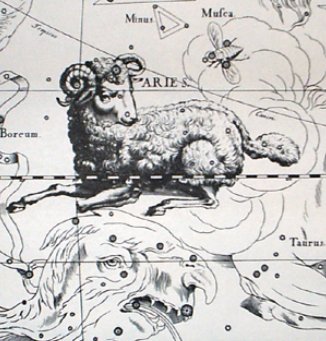
This pair was not circumpolar and they
could therefore indicate where 'the life
cycle' (rising in the east and setting
in the west) was beginning. On the G
tablet this was made clear by presenting
Polaris (†) and the First Point of Aries
(*) in
the same fashion as the more ancient
beginning of spring in the golden age of
Taurus *41 (= *68 - *27) precessional
days earlier, at a time when the star at
the North Pole could have been regarded
as Pherkard
('The Calf', δ Ursae Minoris):
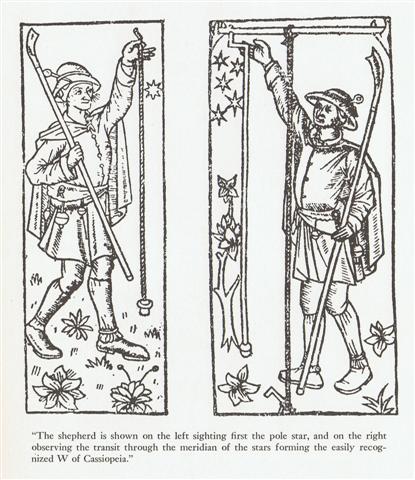
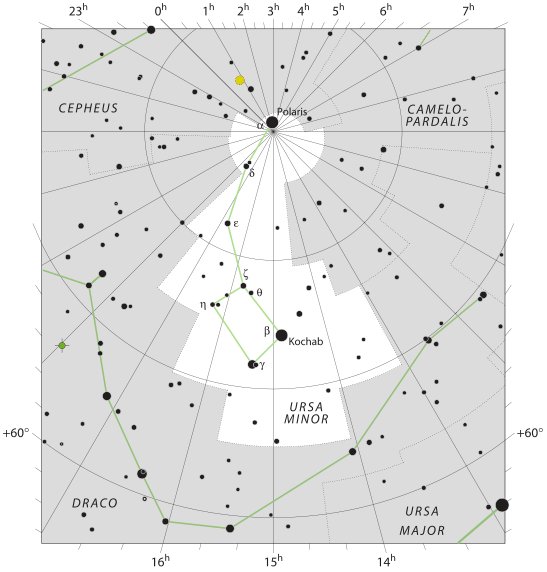
 |
 |
|
Polaris (*26) |
Sheratan & Mesarthim (*27) |
 |
 |
|
*269 (Pherkard) - *202 (Spica &
Alcor) |
*68 (Aldebaran) |
|
... Proclus informs us that the
fox star nibbles continuously at
the thong of the yoke which
holds together heaven and earth;
German folklore adds that when
the fox succeeds, the world will
come to its end. This fox star
is no other than Alcor,
the small star g near zeta Ursae
Majoris (in India Arundati,
the common wife of the Seven
Rishis, alpha-eta Ursae
...

...
Ishtar appears on the walls of
Uruk and curses the two heroes
who have shamed her, but Enkidu
tears out the right thigh of the
Bull of Heaven and flings it in
her face, amidst brutal taunts.
It seems to be part of
established
procedure in those circles. Susanowo
did the same to the sun-goddess
Amaterasu, and so did Odin the Wild
Hunter to the man who stymied him
...
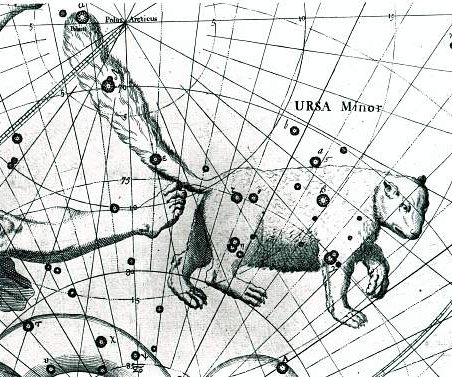
... According to Gylfaginning,
following the murder of Baldr by
Loki, the other gods brought his
body down to the sea and laid
him to rest on the ship. They
would have launched it out into
the water and kindled a funeral
pyre for Baldr but were unable
to move the great vessel without
the help of the giantess
Hyrrokkin, who was sent for out
of Jötunheim. She then flung the
ship so violently down the
rollers at the first push that
flames appeared and the earth
trembled, much to the annoyance
of Thor. Along with Baldr, his
wife Nanna was also borne to the
funeral pyre after
she had died of grief. As Thor
was consecrating the fire with
his hammer Mjolnir, a dwarf
named Litr began cavorting at
his feet. Thor then kicked him
into the flames and the dwarf
was burned up as well ...
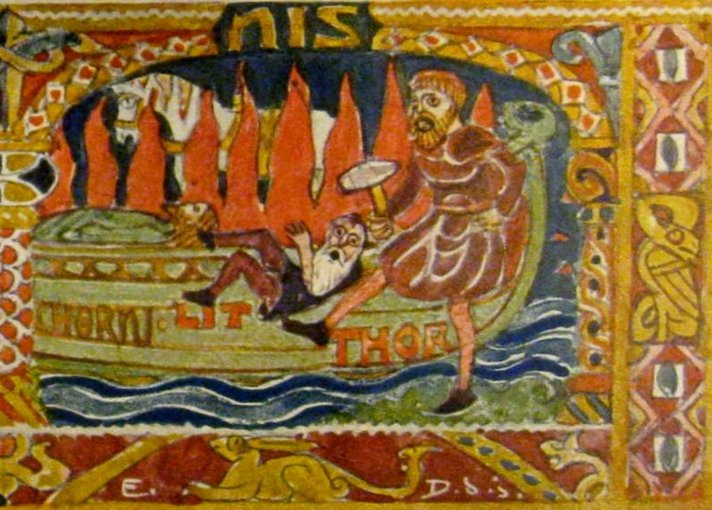
 |
 |
 |
 |
|
Cb14-3 (332) |
Cb14-4 (→ 12 * 12) |
Cb14-5 (→ 290 / 2) |
Cb14-6 (727 = 392 + 335) |
|
te
marama |
te ika |
kua
puo te pouo - vai o maú
hia |
manu noi |
|
INVISIBLY CLOSE TO THE
SUN NORTH OF THE
EQUATOR: |
|
ο Hydrae (176.1) |
ζ Crateris,
ξ Virginis
(177.0), λ Muscae
(177.1), ν Virginis
(177.2), μ Muscae
(177.8) |
Al Sarfah-10 (The
Turn) /
Uttara Phalguni-12 /
Zibbat A.-16
(Tail of the Lion) /
Shēpu-arkū sha-A-17
(Hind Leg of the Lion)
93 LEONIS
(178.0),
DENEBOLA
= β Leonis
(178.3),
ALARAPH
= β Virginis
(178.6) |
PHEKDA
('Thigh') = γ Ursae
Majoris,
β Hydrae (179.3), η
Crateris |
|
Noi.
To
bend down toward the
ground, to bow down, to
worship. Hakanoi,
to prostrate oneself.
Ta.: Noinoi,
small, fine. Mq.: noi,
a dwarf, of slow growth.
Ha.: noinoi,
small, as a dwarf.
Churchill.
Noki.
Nokinoki,
concave. Churchill |
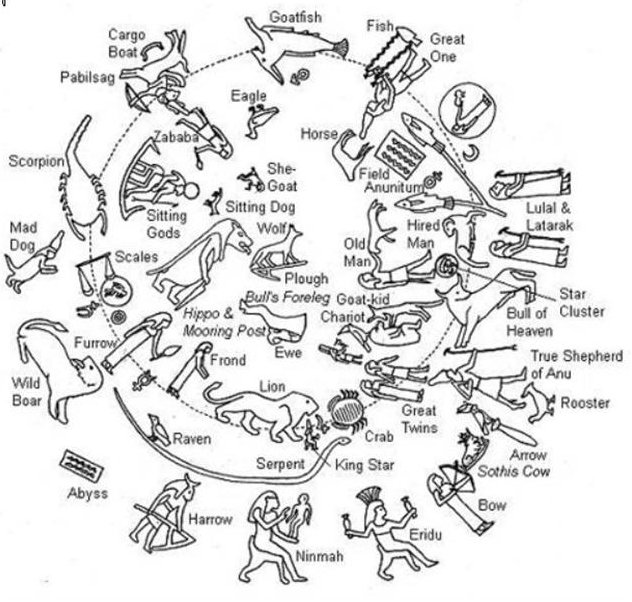 |
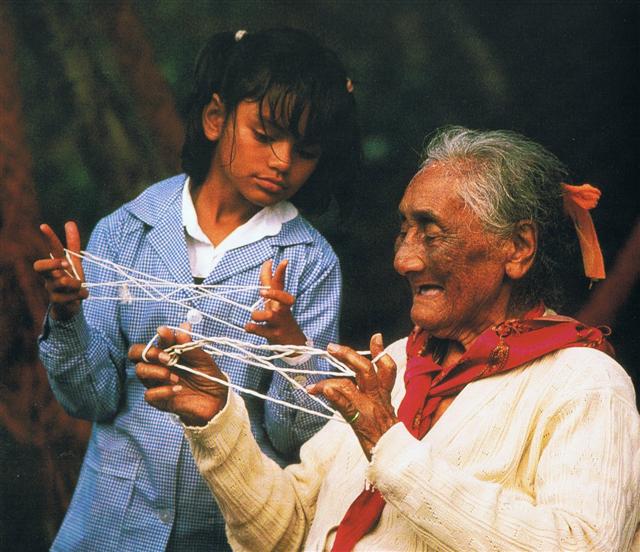
|
Kaikai.
1. Cat's
cradle, in which patterns are
made by moving a thread through
the fingers of both hands, and
are accompanied by the
recitation of verses (one of the
main pastimes of yore). 2.
Sharp: also 'to sharpen' used
instead of hakaka'ika'i.
Vanaga. 1. Mastication, to eat
heavily. 2. Sharp, cutting, edge
of a sword, point of a lance;
moa tara kaikai, cock with
long spurs. Churchill. |
|
Ri. 1.
Mgv.:
ri,
a string, a girdle, to tie
together. Sa.:
li, the sennit
lashing of canoe outriggers.
Mgv.:
rino, to twist a
thread between the forefinger
and thumb. Ta.:
nino, to twist, to
spin. Mq.:
nino, id. Ma.:
rina, a twist of two
or three strands. 2. Ta.:
ri, to hang. Ha.:
li, to hang by the
neck.
Hakariga, to subdue.
Churchill. |
|
Taka,
takataka. Circle; to
form circles, to gather, to get
together (of people). Vanaga. 1.
A dredge. P Mgv.:
akataka, to fish all
day or all night with the line,
to throw the fishing line here
and there. This can only apply
to some sort of net used in
fishing. We find in Samoa
ta'ā a small fishing line,
Tonga taka the short line
attached to fish hooks, Futuna
taka-taka a fishing party
of women in the reef pools
(net), Maori takā the
thread by which the fishhook is
fastened to the line, Hawaii
kaa in the same sense,
Marquesas takako a badly
spun thread, Mangareva takara
a thread for fastening the bait
on the hook. 2. Ruddy. 3. Wheel,
arch; takataka, ball,
spherical, round, circle, oval,
to roll in a circle, wheel,
circular piece of wood, around;
miro takataka, bush;
haga takataka, to disjoin;
hakatakataka, to round,
to concentrate. P Pau.:
fakatakataka, to whirl
around. Mq.: taka, to
gird. Ta.: taa, circular
piece which connects the frame
of a house. Churchill.
Takai, a curl, to tie;
takaikai, to lace up;
takaitakai, to coil. P Pau.:
takai, a ball, to tie.
Mgv.: takai, a circle,
ring, hoop, to go around a
thing. Mq.: takai, to
voyage around. Ta.: taai,
to make into a ball, to attach.
Churchill. |
|
Takapu.
Mq.: a girdle. Ma.: takapu,
the belly. Churchill. |
|
Hakauru, to thread, to
inclose, to admit, to drive in,
to graft, to introduce,
penetrate, to vaccinate, to
recruit. Akauru, to calk.
Hakahuru, to set a tenon
into the mortise, to dowel.
Hakauruuru, to interlace;
hakauruuru mai te vae, to
hurry to. 2. To clothe, to
dress, to put on shoes, a crown.
Hakauru, to put on shoes,
to crown, to bend sails, a ring.
3. Festival, to feast. 4. To
spread out the stones of an
oven. Uruuru, to expand a
green basket. 5. Manu uru,
kite.
Uruga
(uru 1). Entrance.
Churchill. |

... Thus the past is in
front of us, it is known; the future is
behind us, unknown. The point of this is
that our ancestors always had their
backs to the future with their eyes
firmly on the past. Our past is not
conceived as something long ago and done
with, known only as an historical fact
with no contemporary relevance or
meaning. In the words of a respected
Maori elder: The present is a
combination of the ancestors and 'their
living faces' or genetic inheritors,
that is the present generations. Our
past is as much the face of our present
and future. They live in us … we live in
them.
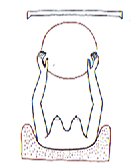
However, the Mouth of the Sea Beast
(Cetus) was identified by the star
Menkar (α Ceti) which at the time of
rongorongo rose with the Sun in
May 4 (*44), and when they on Easter
Island had been observing Menkar close
to the Full Moon (instead of at the Sun
which would have been comparatively
difficult) it was at the opposite side
of the year compared to early May, viz.
in early November (11 = 5 + 12 / 2) -
which south of the equator was the
spring month comparable to May north of
the equator.
124 (May 4) + 366 / 2 =
307 (November 3) = *44 (May 4) + 366 / 2
= *227 = 307 - 80 (March 21, 0h). And as
a confirmation for us *227 alluded to
π (half a
circle) because 22 / 7 = 3.14 was a
standard measure for approximating π:
 |
 |
 |
 |
 |
 |
|
ki te ariki - e ka hua ra
tona rima |
koia kua iri i ruga o te
rima - e o to
vaha
mea |
manu moe
ra |
ki to mata |
e nuku
mata |
hoea |
|
→ 16 |
Cb1-17 |
→ 4 *
29½ |
Cb1-19 |
Cb1-20 (412) |
→ 14 * 29½ |
|
CLOSE TO THE FULL MOON
ON EASTER ISLAND: |
|
ρ Arietis (43.0),
GORGONEA SECUNDA = π Persei
(43.5),
ACAMAR (End of the Stream) =
θ Eridani
(43.6), ε Arietis (43.7),
λ Ceti (43.9)
|
MENKAR
= α Ceti
(44.7) |
3h (45.7)
GORGONEA TERTIA = ρ Persei
(45.1),
ALGOL
= β Persei
(45.9)
|
ι Persei (46.1),
MISAM = κ Persei
(46.2),
GORGONEA QUARTA = ω Persei
(46.7),
BOTEIN
(Pair of Bellies) = δ
Arietis
(46.9) |
ζ Arietis (47.7) |
ZIBAL (Young Ostriches) = ζ
Eridani
(48.0), κ Ceti (48.9) |
|
May 3 |
4 (124) |
5-5 (125) |
6 (*46) |
7 |
8 (128 = 64 + 64) |
|
4-6 |
'April 7 |
8 |
9 |
10 (100) |
11 (*21 = *48 - 27) |
|
"March 23 |
3-24 |
JULIAN
EQUINOX |
(85 = 126 - 41) |
27 |
28 (*7 = *48 - 41) |
|
2-28 (59 = 123 - 64) |
MARCH 1 (60) |
3-2 (61 = 126 - 65) |
3 |
4 |
MARCH 5 (64) |
|
The first day in MARCH,
where at the time of
rongorongo the 'nose' (open
jaw, vaha mea) of the
Great Fish (α Ceti) rose
heliacally, came 16 + 1 days
after Sheratan, and at the
time of Bharani this place
was 3-24, the day before the
Julian equinox.
At the time of Bharani the
Demon star Algol was at the
Julian equinox and at the
time of Hyadum II the Mouth
of the Sea Beast (Menkar)
would have arrived in day 60
(MARCH 1). FEBRUARY 28 was
day 31 + 28 = 59
corresponding to May 3 (123)
- 64.

...Then the big Fish did
swallow him, and he had done
acts worthy of blame.
Had it not been that he
(repented and) glorified
Allah, He would certainly
have remained inside the
Fish till the Day of
Resurrection. - Qur'an,
chapter 37 (As-Saaffat),
verse 139–144.
But We cast him forth on the
naked shore in a state of
sickness,
And We caused to grow, over
him, a spreading plant of
the gourd kind.
And We sent him (on a
mission) to a hundred
thousand (men) or more.
And they believed; so We
permitted them to enjoy
(their life) for a while. -
Qur'an, chapter 37
(As-Saaffat), verse 145–148
... |
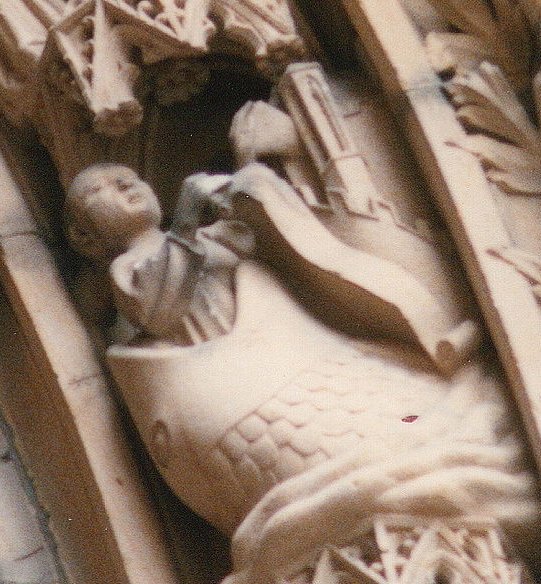
... Vipunen opened his great jaws,
and the hero issued forth to go and build his boat at last
...
Probably Väinömöinen
was building a boat because Alcyone,
the Queen of Sailing, was not far
ahead, viz. (4 + 8 = 12 days) after
Menkar:
 |
 |
 |
|
ko te rima |
kua oo
ki te vai |
ma te ua |
|
Cb1-22 (414 = 392 + 22) |
Cb1-23 |
Cb1-24 |
|
INVISIBLY CLOSE TO THE
SUN NORTH OF THE
EQUATOR: |
|
ο Cor. Borealis (232.0),
δ Lupi (232.1), φ¹, ν²
Lupi (232.2), ν¹ Lupi
(232.3), ε Lupi (232.4),
φ² Lupi (232.5),
PHERKAD
(The Dim One of the Two
Calves) = γ Ursae Min.
(232.6), ε Librae
(232.7), η Cor. Borealis
(232.8), υ Lupi (232.9) |
ALKALUROPS (The
Herdsman's Lance) = μ
Bootis
(233.1),
ED ASICH (Male Hyena) =
ι Draconis
(233.2) |
NUSAKAN = β Cor. Bor.
(234.0), κ¹ Apodis
(234.3), ν Bootis
(234.7), ζ Librae
(234.9) |
|
Nov 8 (*232 = *49 + 183) |
9 |
10 (314) |
|
228 (= 45 + 183) |
229 |
230 (= 314 - 84) |
|
CLOSE TO THE FULL MOON
ON EASTER ISLAND: |
|
τ
Arietis (49.7) |
ALGENIB PERSEI
= α Persei
(50.0), ο Tauri (50.2),
ξ Tauri (50.8)
GIENAH (γ Corvi)
|
σ Persei (51.6) |
|
May 9 (*49 = 414 - 365) |
10 (130) |
11 |
|
ºMay 5 |
6 |
7 |
|
'April 12 |
4-13 (→ 14 * 29½) |
14 (104 = 314 - 183 -
27) |
|
"March 29 (88) |
30 |
31 |
|
MARCH 6 |
7 (66 = 130 - 64) |
8 |
|
45 |
46 = 130 - 84 |
47 |
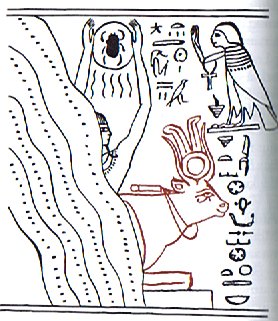
|
18 |
27 |
38 |
38 |
= 121 (= 11 *
11) |
The
number of 'rain
droplets' in the 4
'rivers of time' above
are 121 as in the day
number for ºMay 1 (at
heliacal Algol) or as
the place for the
tattoing instrument (hoea)
in Cb1-21.
Hat-hor (the
House of Horus) emerged
after 11 * 11 dark
nights. But she could
not be observed before
night number 121 + 16 =
137. In ancient Egypt
everything was upside
down and it was a Cow
instead of a Bull. But
Bulls cannot give birth
and Bharani was a place
for birth.
|
ARIES: |
|
1 |
Ashvini |
β and γ
Arietis |
Horse's head |
April 17
(107) |
|
wife of the
Ashvins |
Sheratan and
Mesarthim |
|
2 |
Bharani |
35, 39, and
41 Arietis |
Yoni, the
female organ
of
reproduction |
May 1 (121) |
|
the bearer |
Musca
Borealis |
 |
 |
 |
 |
|
Cb2-1 (407 + 10) |
Cb2-2 (392 + 26) |
Cb2-3 (27) |
|
Eaha te honu kua
tupu |
i
to maitaki - o te
hau |
te
hono huki - maro |
|
INVISIBLY CLOSE TO
THE SUN NORTH OF THE
EQUATOR: |
|
θ Cor. Borealis
(235.3), γ Lupi
(235.6),
GEMMA
= α Cor. Bor.,
ZUBEN ELAKRAB = γ
Librae,
QIN = δ Serpentis,
ε Tr. Austr.
(235.7), μ Cor.
Borealis (235.8), υ
Librae (235.9)
SIRRAH (α
Andromedae)
|
φ Bootis (236.2), ω
Lupi, τ Librae
(236.3), ψ¹ Lupi
(236.7), ζ Cor.
Borealis (236.9) |
κ Librae (237.2), ι
Serpentis (237.4),
ψ² Lupi, ρ Oct.
(237.5), γ Cor.
Borealis, η Librae
(237.7),
COR
SERPENTIS
= α Serpentis
(237.9) |
|
Nov 11 (314 + 1 =
132 + 183) |
12 (*236 = *53 +
*183) |
13 (*237 = 8 * 29½ +
1) |
|
ºNov 7 (311 = 128 +
183) |
8 (*232 = *49 +
*183) |
9 |
|
'Oct 15 (288 = 105 +
183) |
16 |
17 (*210 = *173 +
*37) |
|
"Oct 1 (274 = 91 +
183) |
2 (= 16 - 14) |
3 (*196 = *173 +
*23) |
|
SEPT 8 (251 = 68 +
183) |
9 (*172 = *236 -
*64) |
10 |
|
231 (= 315 - 84) |
232 (= 172 + 60) |
233 (= 253 - 20) |
|
... In other words,
the ancient Druidic
religion based on
the oak-cult will be
swept away by
Christianity and the
door - the god Llyr
- will languish
forgotten in the
Castle of Arianrhod,
the Corona
Borealis. This
helps us to
understand the
relationship at Rome
of Janus and the
White Goddess Cardea
who is ... the
Goddess of Hinges
who came to Rome
from Alba Longa. She
was the hinge on
which the year swung
- the ancient Latin,
not the Etruscan
year - and her
importance as such
is recorded in the
Latin adjective
cardinalis - as
we say in English
'of cardinal
importance - which
was also applied to
the four main winds;
for winds were
considered as under
the sole direction
of the Great Goddess
until Classical
times ...
 |
|
CLOSE TO THE FULL
MOON
ON EASTER ISLAND: |
|
no star listed (52) |
ψ Persei (53.1)
ACRUX (α CRUCIS)
|
δ Persei (54.7) |
|
May 12 (132 = *52 +
80) |
13 |
14 (500 = 134 + 366)
|
|
ºMay 8 |
9 (*49) |
10 (130) |
|
'April 15 |
16 |
17 (107 = 473 = 500
- 27) |
|
"April 1 (91 = 7 *
13) |
2 |
3 (*13 = *54 - 41) |
|
MARCH 9 (68 = 132 -
64) |
10 |
11 (436 = 70 + 366) |
|
48 (= 68 - 20) |
49 (= *53 - 4) |
416 (= 500 - 84) |
|
Tupu
1.
Shoot, sprout, bud;
to sprout, to bud.
2. Pregnant: vî'e
tupu (o te poki);
to be conceived (of
fetus in its
mother's womb):
he-tupu te poki i
roto i te kopú o
toona matu'a.
Vanaga.
To
grow, to sprout, to
germinate, to come
forth, to conceive,
pregnant, germ;
mea tupu, plant;
tupu ke avai,
of rapid growth;
tupu horahorau,
precocious;
hakatupu, to
produce, to
stimulate growth, to
excite. P Pau.:
fakatupu, to
raise up, to create.
Mgv.: tupu,
to grow, to
conceive, to be
pregnant. Mq.:
tupu, to grow,
to sprout, to
conceive. Ta.:
tupu, to grow,
to sprout.
Churchill. Mgv.:
Tupu, the best
or worst, used of
men or of bad
qualities. Sa.:
tupu, king. Ma.:
tupu, social
position, dignity.
Churchill. |
|
... The Sun king (Hotu
A Matua) arrived
to Easter Island in
Tangaroa Uri 15
(288 = 2 * 144)
which corresponded
to °November 21 (325
= 288 + 37) in the
Gregorian calendar,
the day when at the
time of the Pope the
Sun had reached
Antares. The earlier
Julian calendar
distance 26 days was
expanded by Gregory
XIII to 37 days:
... The Julian
calendar day
Thursday, 4 October
1582 was followed by
the first day of the
Gregorian calendar,
Friday, 15 October
1582 (the cycle of
weekdays was not
affected) ...
This we have
established from the
G text, but not
until now has it
been revealed that
the Julian calendar
date 10 November
(314) in the year
1582 AD was at
heliacal Antares.
325
(°November 21) - 314
(10 November) = 11 =
°October 15 (288) -
4 October (277) ... |
 |
 |
 |
 |
|
Cb2-4 (420 = 407 + 13) |
Cb2-5 (396 + 25) |
Cb2-6 (30) |
Cb2-7 |
|
te ua |
koia ra |
kua tuku
ki to mata - ki tona tukuga |
e kiore -
henua - pa rei |
|
CLOSE TO THE FULL MOON
ON EASTER ISLAND: |
|
Al Thurayya-27 /
Krittikā-3 /
Hairy Head-18
(Cockerel) |
MENKHIB = ζ Persei
(57.6)
PORRIMA (γ Virginis)
|
ZAURAK
(The Boat) = γ
Eridani
(58.9) |
|
TAU-ONO
(Six Stones)
ATIKS = ο Persei, RANA
(Frog) = δ Eridani
(55.1),
CELAENO (16 Tauri), ELECTRA
(17), TAYGETA (19),
ν Persei (55.3),
MAIA (20), ASTEROPE (21),
MEROPE (23)
(55.6) |
Temennu-3 (Foundation
Stone)
ALCYONE
(56.1),
PLEIONE (28 Tauri),
ATLAS
(27)
(56.3) |
|
15 (135 + 365 = 500) |
May 16 (136) |
17 |
18 (*58) |
|
... another Alcyone,
daughter of Pleione, 'Queen
of Sailing', by the oak-hero
Atlas, was the mystical
leader of the seven Pleiads.
The heliacal rising of the
Pleiads in May marked the
beginning of the
navigational year; their
setting marked its end when
(as Pliny notices in a
passage about the halcyon) a
remarkably cold North wind
blows
... |
|
... Vainamoinen set about
building a boat, but when it
came to the prow and the
stern, he found he needed
three words in his rune that
he did not know, however he
sought for them. In vain he
looked on the heads of the
swallows, on the necks of
the swans, on the backs of
the geese, under the tongues
of the reindeer. He found a
number of words, but not
those he needed. Then he
thought of seeking them in
the realm of Death, Tuonela,
but in vain. He escaped back
to the world of the living
only thanks to his potent
magic. He was still missing
his three runes. He was then
told by a shepherd to search
in the mouth of Antero
Vipunen, the giant ogre. The
road, he was told, went over
swords and sharpened axes.
Ilmarinen made shoes, shirt
and gloves of iron for him,
but warned him that he would
find the great Vipunen dead.
Nevertheless, the hero went.
The giant lay underground,
and trees grew over his
head. Vainamoinen found his
way to the giant's
mouth, and planted his iron
staff in it. The giant awoke
and suddenly opened his huge
mouth. Vainamoinen slipped
into it and was swallowed.
As soon as he
reached the enormous
stomach, he thought of
getting out. He built
himself a raft and floated
on it up and down inside the
giant. The giant felt
tickled and told him in many
and no uncertain words where
he might go, but he did not
yield any runes. Then
Vainamoinen built a smithy
and began to hammer his iron
on an anvil, torturing the
entrails of Vipunen, who
howled out magic songs to
curse him away. But
Vainamoinen said, thank you,
he was very comfortable and
would not go unless he got
the secret words. Then
Vipunen at last unlocked the
treasure of his powerful
runes. Many days and nights
he sang, and the sun and the
moon and the waves of the
sea and the waterfalls stood
still to hear him.
Vainamoinen treasured them
all and finally agreed to
come out. Vipunen opened his
great jaws, and the hero
issued forth to go and build
his boat at last
... |
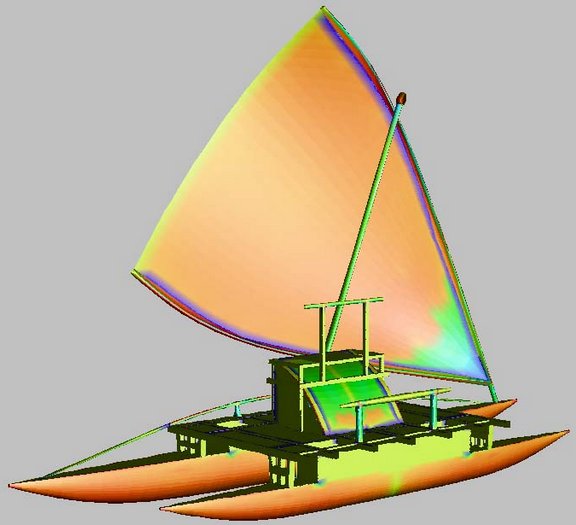
|































